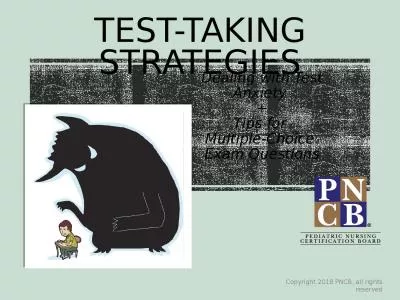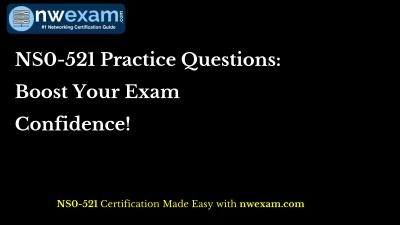PPT-Test-Taking Strategies Study skills
Author : beastialitybiker | Published Date : 2020-07-03
Multiple Choice Tests Weeding out absolute words Recognizing umbrella or fusion questions 2 Multiple Choice Tests 3 Umbrella Questions Also known as fusion questions
Presentation Embed Code
Download Presentation
Download Presentation The PPT/PDF document "Test-Taking Strategies Study skills" is the property of its rightful owner. Permission is granted to download and print the materials on this website for personal, non-commercial use only, and to display it on your personal computer provided you do not modify the materials and that you retain all copyright notices contained in the materials. By downloading content from our website, you accept the terms of this agreement.
Test-Taking Strategies Study skills: Transcript
Download Rules Of Document
"Test-Taking Strategies Study skills"The content belongs to its owner. You may download and print it for personal use, without modification, and keep all copyright notices. By downloading, you agree to these terms.
Related Documents

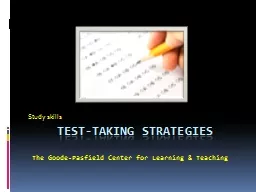

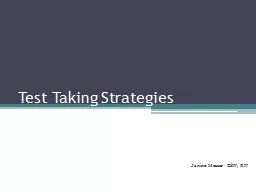

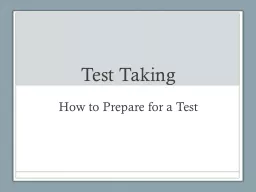





![[EPUB] - OAE Special Education - Test Taking Strategies: OAE 043 - Free Online Tutoring](https://thumbs.docslides.com/905544/epub-oae-special-education-test-taking-strategies-oae-043-free-online-tutoring-new-2020-edition-the-latest-strategies.jpg)

